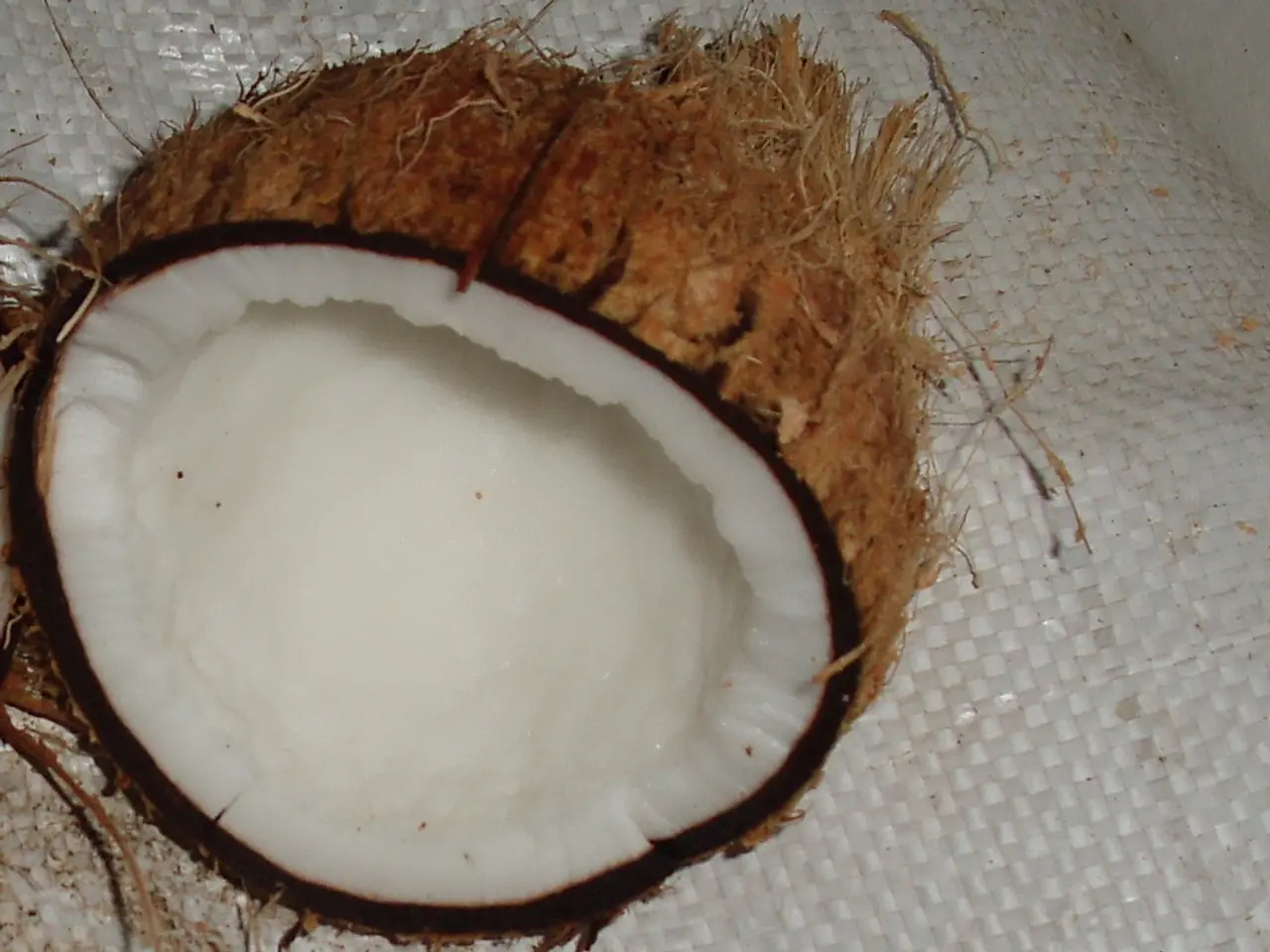Coconut cultivation revival in Kilifi: A look at farmers employing hybrid techniques to boost production
In the coastal region of Kilifi County, Johnstone Mbigo, a farmer in Junju Ward, has been leading a remarkable transformation in the coconut farming industry. Mbigo, the founder of the Junju Chodari Coconut Farmers Self-Help Group, has introduced a new high-yield hybrid variety that has brought about significant improvements for his fellow farmers.
The group's nursery now houses 10,000 seedlings of this hybrid variety, a stark contrast to the 50 coconut trees remaining on Mbigo's two-acre plot. This new variety, known as the Tanzania hybrid, was introduced in 2017 by Kilifi County, the Kenya Agricultural and Livestock Research Organisation (KALRO), and the Kenya Plant Health Inspectorate Service (KEPHIS).
For farmers like Mkazaa Yuwi, the change to the hybrid variety has been transformative. The Sampoorna hybrid matures in just 2.5 to 3 years, producing up to 300 nuts per year, a significant increase from the traditional varieties that take much longer to mature and yield fewer nuts. Additionally, the Sampoorna variety boasts an oil content of 68 percent, slightly higher than the traditional type.
However, the transition to this high-yielding variety has not been without its challenges. Pest infestations, particularly the rhinoceros beetle, require active management and farmer education. Droughts remain a major threat to the hybrid seedlings, which need up to 40 litres of water daily in dry seasons. Shrinking land sizes from subdivision also reduce economies of scale for farmers.
Despite these challenges, the demand for the new hybrid coconuts is high. In Kilifi, brokers are buying entire farms before harvest, indicating a thriving market for the Sampoorna hybrid. A mature coconut can fetch up to Sh100 in the market, compared to Sh30 to Sh50 at the farm gate.
The increased productivity and market demand are particularly welcome news for Mbigo and his eight children, who rely solely on coconut farming. Mbigo's income from coconut farming has significantly decreased, earning less than Sh20,000 from three seasons combined, compared to Sh80,000 per season in the 1990s.
Value addition, such as processing coconut milk, virgin oil, or soap, is still lacking among farmers. This is an area that could potentially further increase the economic benefits of coconut farming for smallholder farmers in coastal counties, including Mombasa, Kilifi, Kwale, Lamu, Tana River, and Taita-Taveta, where more than 100,000 farmers rely on coconut farming.
More than 2.6 million of Kenya's 10 million coconut trees are over 60 years old, producing 28 nuts per year. This underscores the urgent need for the introduction of high-yield varieties like the Sampoorna hybrid to revitalise the coconut farming sector and improve the livelihoods of smallholder farmers.
In conclusion, the introduction of the high-yield hybrid coconut variety in Kilifi County is bringing about a much-needed transformation in the coconut farming sector. The increased productivity and market demand offer a glimmer of hope for farmers like Mbigo, who are grappling with decreasing yields and income. However, challenges such as pest infestations, droughts, and the need for value addition remain to be addressed to fully realise the potential of this high-yielding variety.








